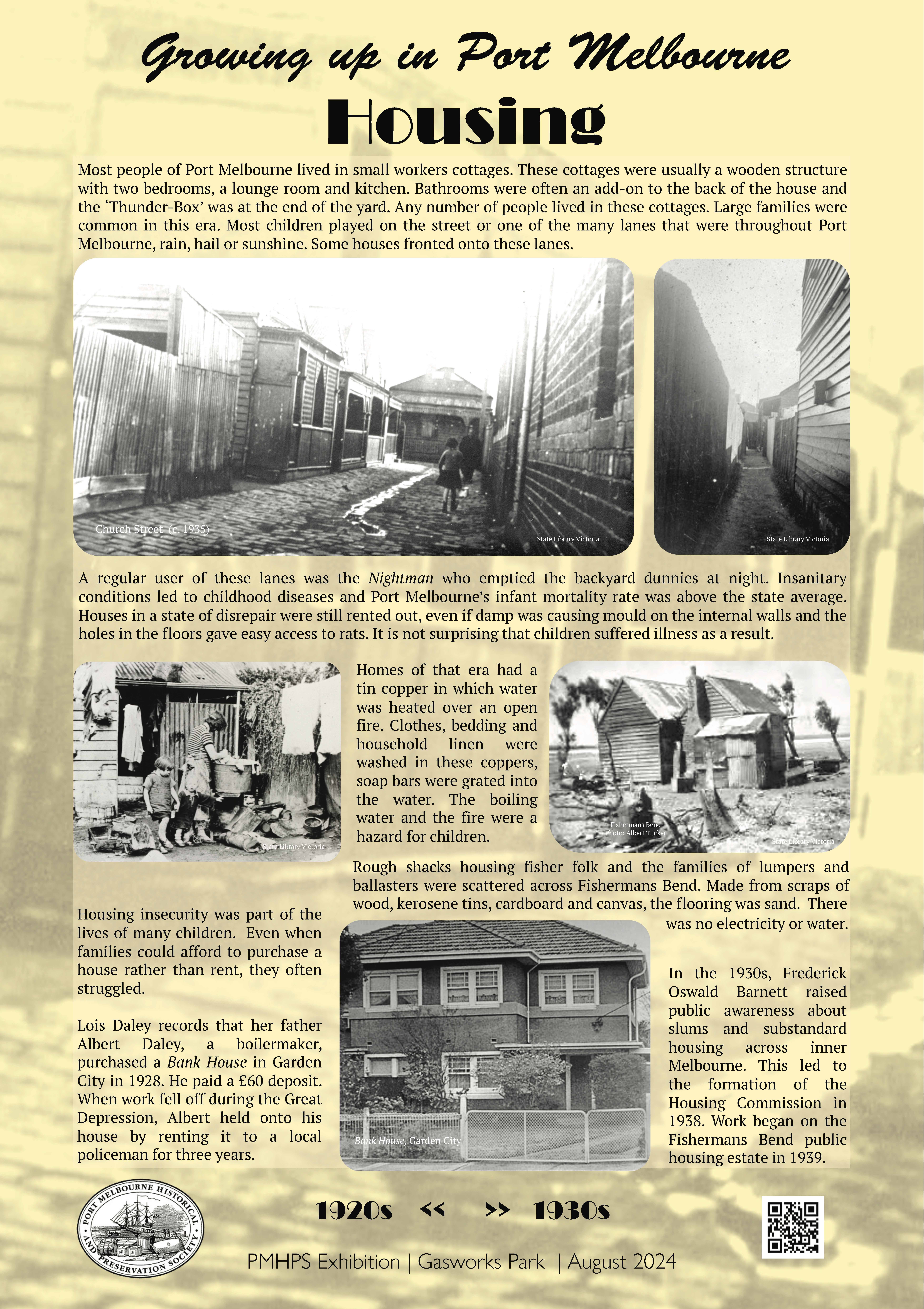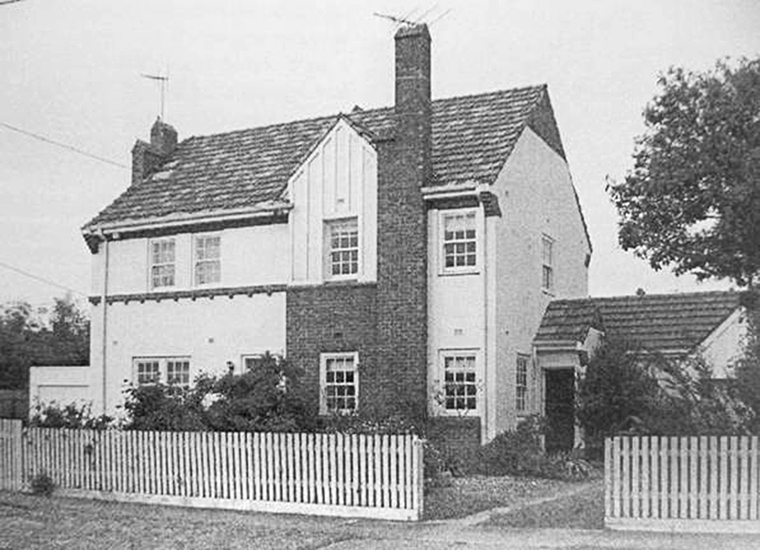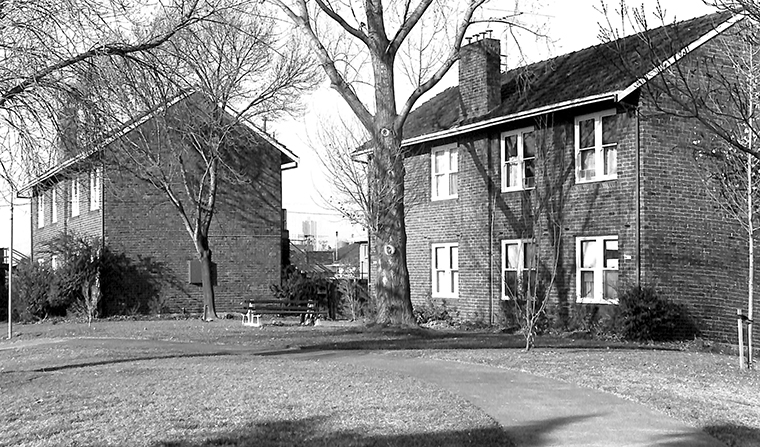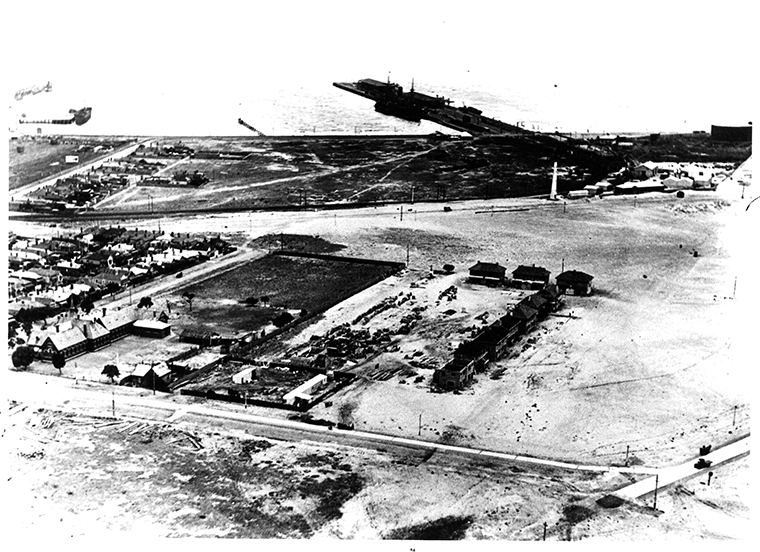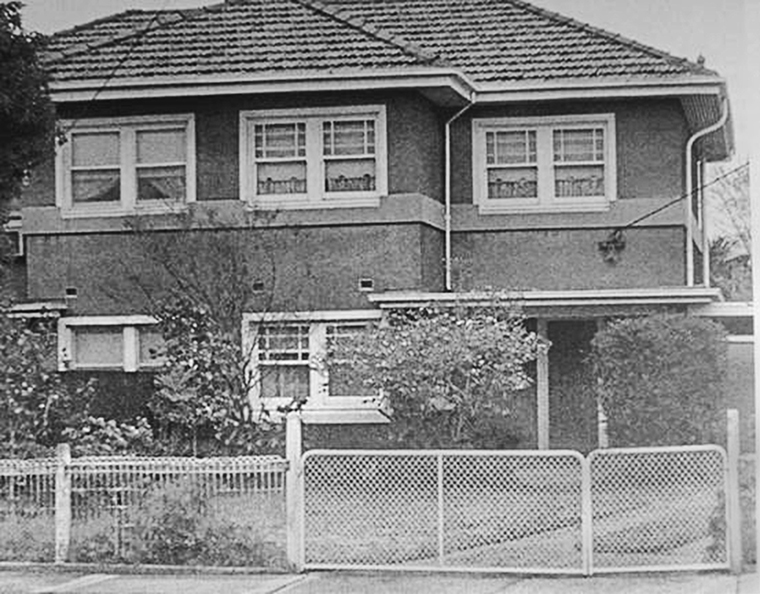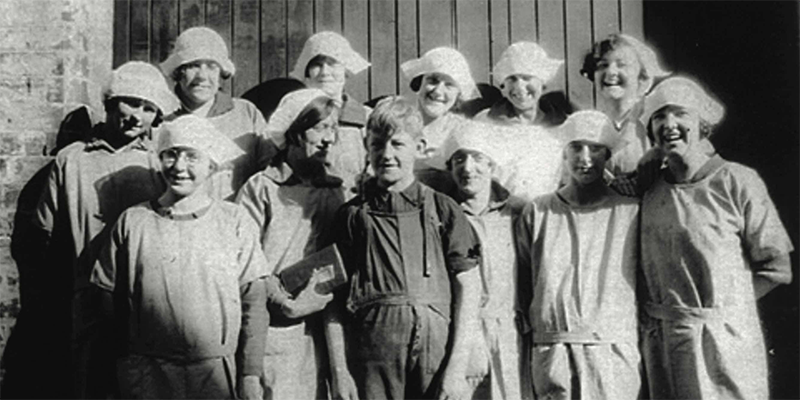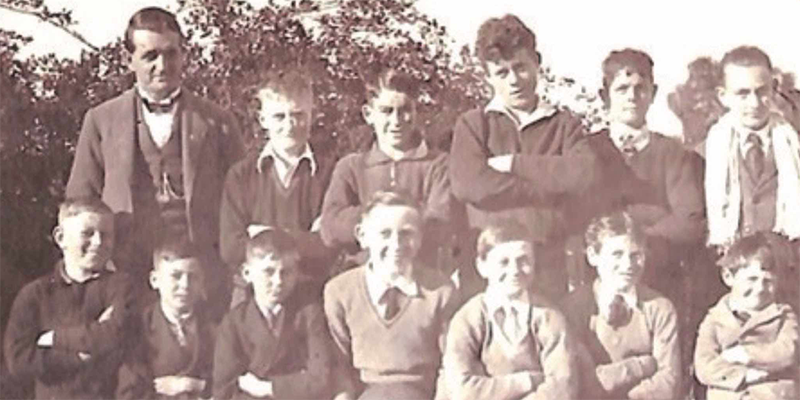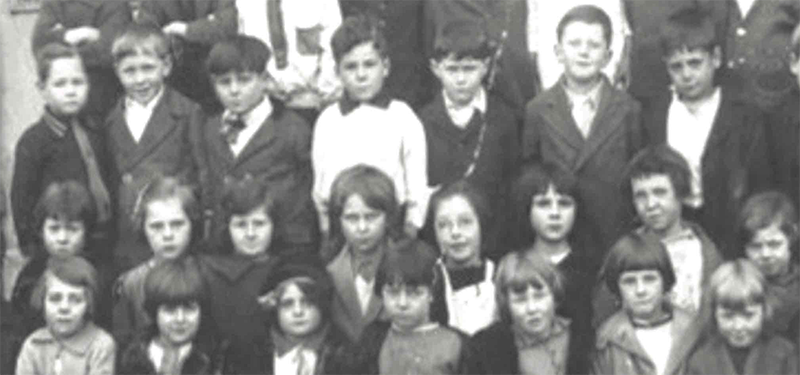Growing up in Port Melbourne – Housing
In 1920 there was an eclectic mix of houses in Port Melbourne from grand, two story houses built in the 1870-1900 period to the shacks on Fisherman’s Bend behind New Pier. Some of the worst of the 19th century slums had been cleared as a result of Dr George Cuscaden’s work but many still remained as the photographs on the panel indicate.
During these twenty years a number of building projects, mostly financed by government, began the transformation of the housing in Port.
The Dunstan Estate:
The 1920s movement for slum abolition was led by Oswald Barnett, a Methodist with strong views on the need for social reform. He exposed the slums of inner Melbourne and led eventually to the foundation of the Housing Commission, of which he became vice-chairman.
It was Oswald Barnett’s influence on the Victorian Premier, Sir Albert Dunstan, that in 1936 resulted in the building of the low cost housing estate in Port Melbourne named after Dunstan.
The Quartets:
This small estate in Williamstown Road has been well preserved and is a very good example of the early building program of the Housing Commission.
Garden City:
After a long campaign by the Port Melbourne Council and the Victorian Parliament member for Port Melbourne, James Lawrence Murphy, the State Savings Bank of Victoria purchased land on Fisherman’s Bend for the construction of low cost housing. The design of the estate was based on the principles of the English Garden City movement with open space and areas set aside for community use.
Construction began in 1926 but in spite of the plan for them to be housing for the workers the deposit on these first houses was too great for the average wage earner. Those who purchased these early ‘bank houses’ were mostly tradesmen or clerical workers.

